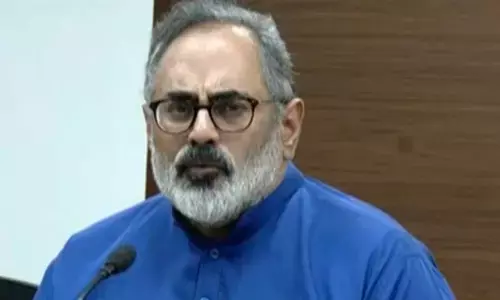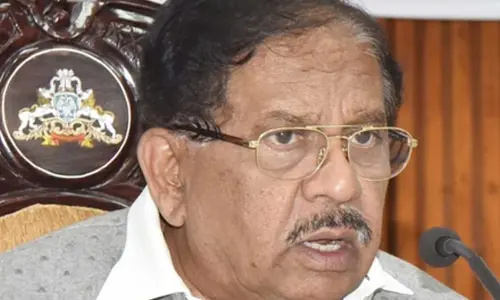A Tribute to Bose : The 'Sound Man' who redefined quality of music

S Madhusudhana Rao
 Bose is the Rolls Royce of the music world. Known for their high-fidelity and perfection, Bose music systems and speakers are a class apart. The man who set the standards for sound and acoustics was Dr Amar Gopal Bose, founder and chairman of US-based Bose Corporation. His death on Friday at his home in Wayland in Massachusetts, US, at the age of 83, was a rude shock to millions of music aficionados for whom Bose music systems were ultimate in listening pleasure.
Bose is the Rolls Royce of the music world. Known for their high-fidelity and perfection, Bose music systems and speakers are a class apart. The man who set the standards for sound and acoustics was Dr Amar Gopal Bose, founder and chairman of US-based Bose Corporation. His death on Friday at his home in Wayland in Massachusetts, US, at the age of 83, was a rude shock to millions of music aficionados for whom Bose music systems were ultimate in listening pleasure.
Son of an Indian immigrant, Amar Gopal Bose lived by music throughout his life. Born in 1929 to an American schoolteacher and a Bengali freedom fighter Noni Gopal Bose who fled to the US to escape British incarceration, Dr Bose's story was music to ears when this author interviewed him in his sprawling headquarters in Framingham, Massachusetts, in 1996.
The first thing that struck me when I walked into his office was he was agile, alert and slim. He put on no airs, exuded bonhomie and was at ease with himself. "Perfection and dedication to work are my two watchwords," he said. Most of the research work done at Framingham is basic; but he left the research applications or products to others. Dr Bose believed in dealing with fundamentals which invariably would lead to innovation. "The gestation period of any project we undertake is very long," Dr Bose said, adding "the Auditioner system which can enable people to hear the effects of sound systems and sources in public places before they are built has taken about a decade to develop and test it."
Dr Bose's interest in music was immense. It explains why he was fascinated from childhood by various natural sounds and their chastity and how they got distorted when produced artificially using mechanical or electronic instruments. "Music should be as natural as possible, without being distorted by electronic gadgets, when we listen in an auditorium, concert hall or a theatre."
That belief in the purity of sound had led him to search for a pair of good speakers in the market way back in the 1950s. But his efforts were in vain because, according to Dr Bose, good speakers were non-existent at that time. That proved to be a blessing in disguise for Dr Bose whose inquisitive mind had started searching for solutions which ultimately led to the invention of revolutionary Bose speakers.
An accomplished pianist, Dr Bose, then an assistant professor of electrical engineering at Massachusetts Institute of Technology (MIT), started looking into the relationship between reproduced sound as perceived by people and sound as measured by electronic equipment. He soon realized that the then existing measurements for loudspeakers did not correlate with human perception and that new methods had to be developed.
Years of research went into analyzing the sound of live performances and then into recreating them as closely as possible for home listening. Twelve years after Bose went speaker-shopping, he introduced the 901 direct/reflecting speaker system in 1968, setting a new standard in music reproduction.
Dr Bose patented his new audio technologies and MIT encouraged him to start his own company and create products based on his own inventions, giving birth to the eponymous Bose Corporation. His first products, high-power amplifiers, were produced under contract for the US military. Even now, Bose is closely associated with US defence and NASA and one of the company's acclaimed products is noise reduction head gear for pilots.
Since its introduction, the 901 has become the world's most extolled loudspeaker and the direct/reflecting technology, the base for the wide-ranging Bose Speaker systems. The success of its secret is the system's ability to give life-like quality in reproduced music. Technically speaking, live music in a concert hall is a combination of reflected and directed energy and what people hear mostly is the reflected energy, not normally reproduced by conventional speakers. The 901speakers made up of a series of in-built mini-speakers, called drive units, and positioned in multi-directional array, recreates a natural balance between direct and reflected sound energy.
The following years saw Dr Bose introducing more technologically challenging products. In 1987, Acoustimass speaker technology came into being, allowing a reduction in the size of speaker components while offering purer sound and an increase in the dynamic range of bass performance. It was followed by the Bose Lifestyle music systems, Jewel Cube speakers and the compact Wave radio, among others.
In the early 1980s, Dr Bose also revolutionized the automotive sound market with the introduction of the world's first factory-installed acoustically customized music system for individual car models. Though Bose, individually as a scientist and commercially as a company, was responsible for the sound success, other areas of research were not out of bounds for hundreds of scientists employed there. "We go into any field of research that we think fit," Dr Bose said, adding: "For example, we did cold fusion research a few years ago when the whole world was agog about it. Of course, nothing has come out of it."
Research and development were the key principles Dr Bose adhered to. He proudly said that his company had ploughed back all the profits into R&D every year. His corporate philosophy was to create products that combine high technology with ease of use. Despite his hectic schedule, Dr Bose had always found time to teach at MIT. "The interaction with students will give birth to new ideas and solutions," he said.
Though he was born and brought up in the US, Dr Bose was nostalgic about India. "My father used to tell me to do something for India." Dr Bose who felt that his personality had been shaped by his parents, recalled his earlier days when his father Nani Gopal Bose arrived in the US in 1920 from India to raise funds for the Independence movement back home. The 20-year-old Nani was literally saved from imminent deportation by Taraknath Das, who himself was a fugitive from the British. Nani had spent his last 50 cents by sending an SOS to Das who rescued the young man by claiming Nani was his lost nephew. In the following years, the duo had actively campaigned in the US against British rule in India and raised funds.














